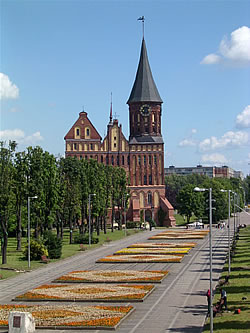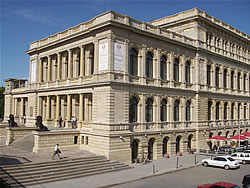Kaliningrad is a picturesque city divided by the Pregel (Pregolya) River. It has a number of lakes and ponds. One of the most attractive features of Kaliningrad is its vast greenery: parks, forests, and trees in the streets.
Founded in XIII century as Koenigsberg, the city had been a capital of German East Prussia until the Potsdam Conference in 1945, when one third of East Prussia including the city was annexed by the Soviet Union. The original local residents were deported to Germany and newcomers from all over the Soviet Union - mostly from central Russia - settled in the region.

The city was renamed after M.I. Kalinin, who had an informal title of the all-Union's 'master' under Stalin. In the 1960s-70s the city was largely rebuilt in a Soviet style, so nowadays one can see a combination of the Soviet 'khrushevki' and 'brezhnevki' ('match-box' houses popular during the times of Khruschev and Brezhnev) and German mansions.
The Kaliningrad's architecture is a vivid witness of the city's history. People's attitude towards the past of the region has changed radically in the last two decades. Most of the Kaliningrad citizens are now proud of the city's past and take care to preserve and restore the remains of the historical heritage.

Koenigsberg-Kaliningrad has celebrated its 750th anniversary in 2005.







